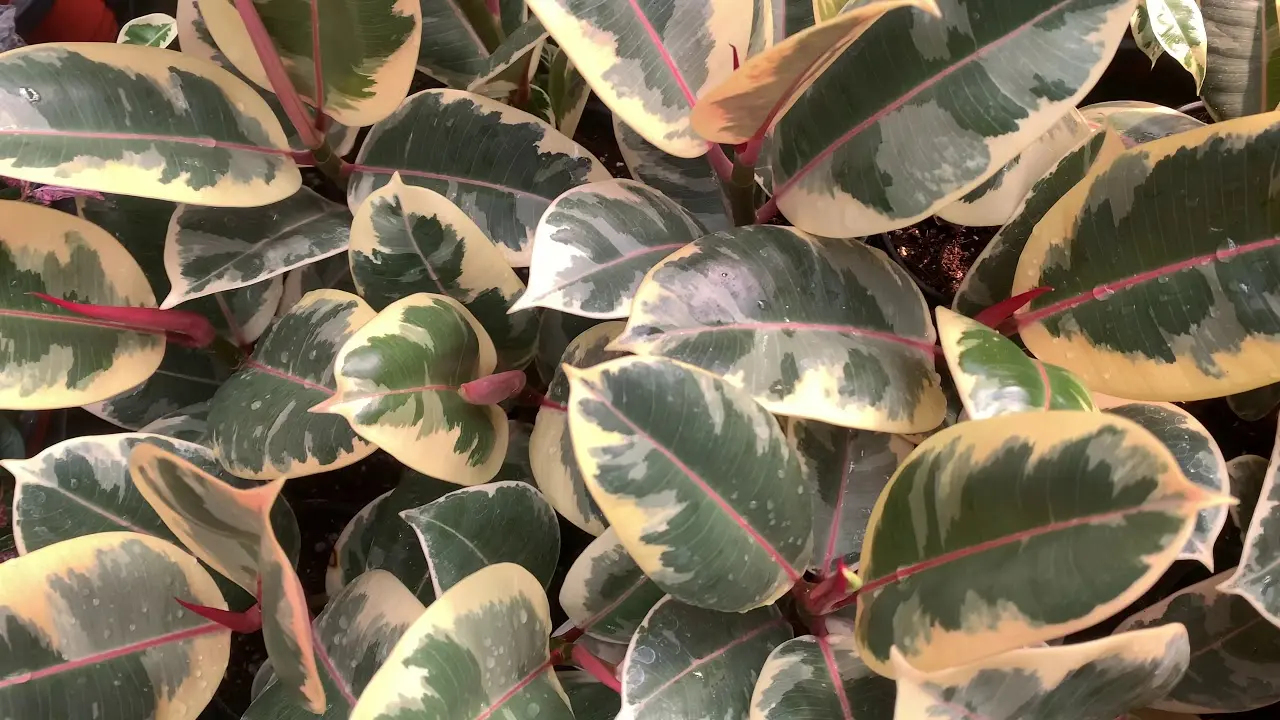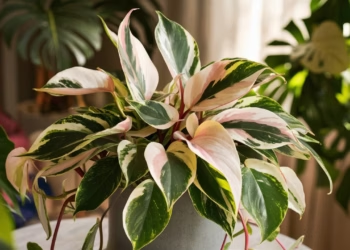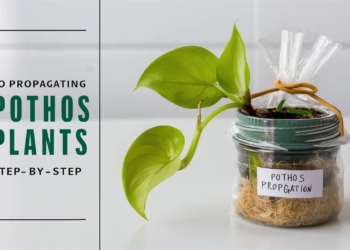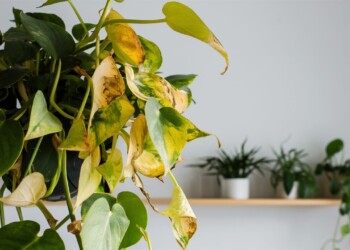Ficus Tineke, also known as the Rubber Plant, is a striking indoor plant beloved for its glossy, variegated leaves and low maintenance needs. Whether you’re a seasoned plant parent or just starting your green journey, caring for a Ficus Tineke can be a rewarding experience. This guide will walk you through everything you need to know about Ficus Tineke care, from light requirements to common issues and how to address them. Ready to get your hands dirty? Let’s dive in!
Table Of Contents
The Charm of Ficus Tineke
There’s something undeniably captivating about the Ficus Tineke. With its broad, creamy white and green leaves, it stands out in any room. It’s not just a pretty face either; the Ficus Tineke is known for its air-purifying qualities, making it a healthy addition to your home environment.
Understanding Ficus Tineke
Common Name: Ficus Tineke, variegated rubber tree
Botanical Name: Ficus elastica ‘Tineke’
Family: Moraceae
Plant Type: Perennial
Mature Size: 2–10 ft. tall, 1-2 ft. wide
Sun Exposure: Partial
Soil Type: Well-drained
Soil pH: Acidic to neutral
Hardiness Zones: 10-12 (USDA)
Native Area: Cultivar, no native range
Toxicity: Toxic to pets
Light Requirements
How Much Light Does Ficus Tineke Need?
Ficus Tineke thrives in bright, indirect light. Think of a spot where it can bask in the sunlight but not get scorched by direct rays. If your plant isn’t getting enough light, you might notice the colors fading or leaves dropping.
Finding the Perfect Spot
Place your Ficus Tineke near an east or west-facing window. If your windows let in harsh sunlight, use sheer curtains to diffuse the light. During winter months, when natural light is scarce, you might want to consider supplementing with a grow light.
Temperature and Humidity
Ficus Tineke thrives in warm temperatures ranging from 60 to 75 degrees Fahrenheit. It requires moderate humidity and should be kept away from drafts, dry heat, and air conditioning vents. If temperatures drop below 55 degrees, the plant may suffer.
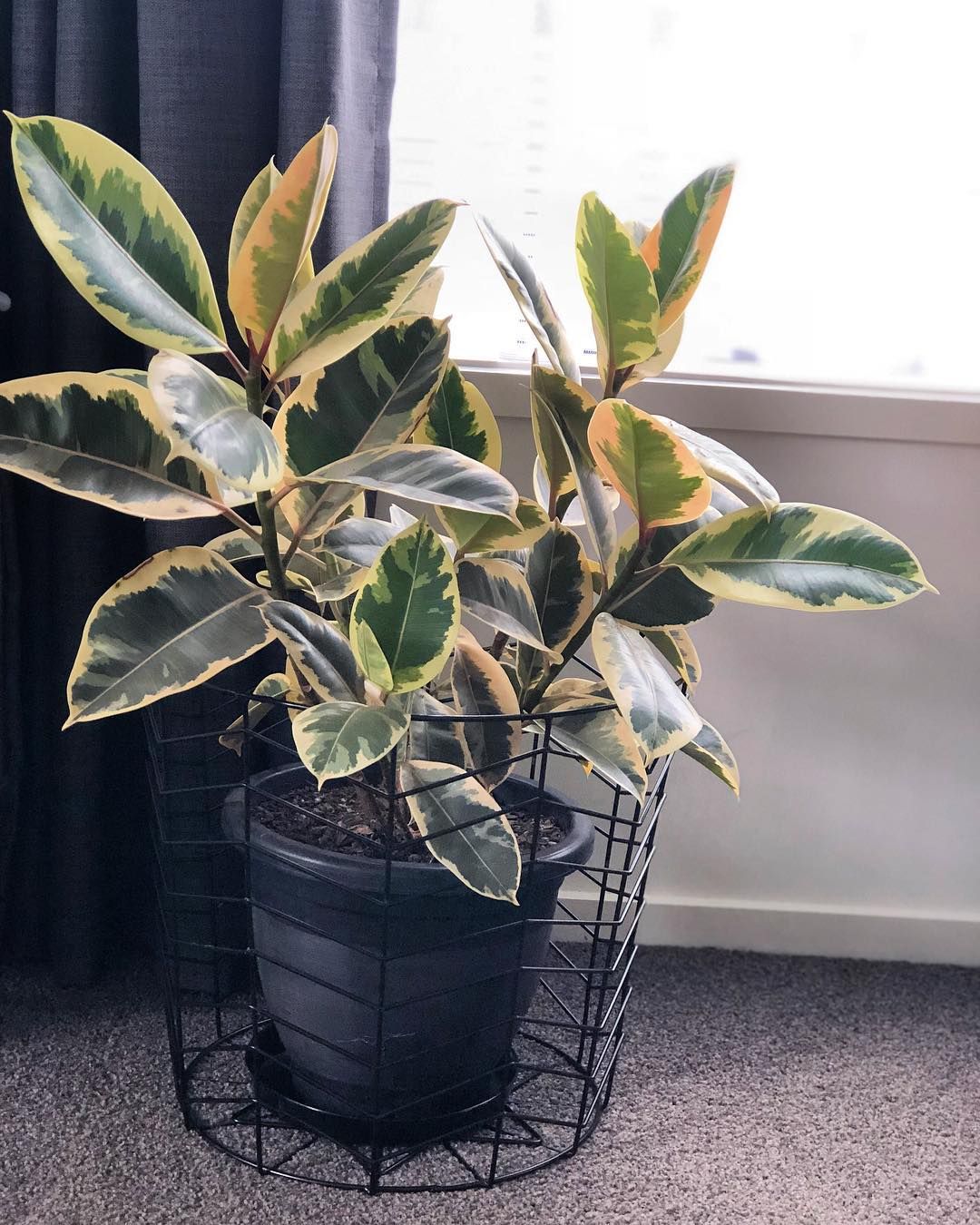
Watering Guidelines
How Often Should You Water Your Ficus Tineke?
Watering can be a bit tricky with Ficus Tineke, but here’s a general rule of thumb: water when the top inch of soil feels dry. Overwatering can lead to root rot, while underwatering might cause the leaves to drop.
Tips for Proper Watering
- Check Soil Moisture: Stick your finger about an inch into the soil to check moisture levels.
- Use Room Temperature Water: Cold water can shock the roots.
- Drainage is Key: Ensure your pot has drainage holes to prevent water from sitting at the bottom.
Soil and Fertilization
What’s the Best Soil for Ficus Tineke?
A well-draining, aerated soil mix is ideal. You can use a standard houseplant potting mix and add some perlite or sand to improve drainage.
Feeding Your Ficus Tineke
Ficus Tineke appreciates a little extra nutrition during the growing season (spring and summer). Use a balanced, water-soluble fertilizer every four to six weeks. Reduce feeding in the fall and winter when the plant’s growth slows down.

Pruning and Repotting
How to Prune Your Ficus Tineke
Pruning helps maintain the shape and health of your Ficus Tineke. Trim back leggy growth and remove any yellowing or damaged leaves. Always use clean, sharp scissors or pruning shears to prevent disease spread.
When to Repot
Repotting is usually necessary every two to three years or when the plant becomes root-bound. Choose a pot that is one size larger than the current one, and gently loosen the roots before placing your plant in fresh soil.
Common Issues and Solutions
Why Are My Ficus Tineke’s Leaves Dropping?
Leaf drop can be caused by several factors:
- Overwatering or underwatering
- Sudden temperature changes
- Low humidity
How to Deal with Pests
Ficus Tineke is generally resistant to pests, but occasionally, it might get spider mites, mealybugs, or scale. Here’s how to handle them:
- Spider Mites: Wipe leaves with a damp cloth and increase humidity.
- Mealybugs: Dab affected areas with a cotton swab dipped in rubbing alcohol.
- Scale: Use neem oil or insecticidal soap.
Another Common Problems
- Yellowing Leaves: Often due to overwatering or drafty conditions.
- Brown Tips: Usually caused by too much direct sunlight. Move the plant to a spot with filtered light.
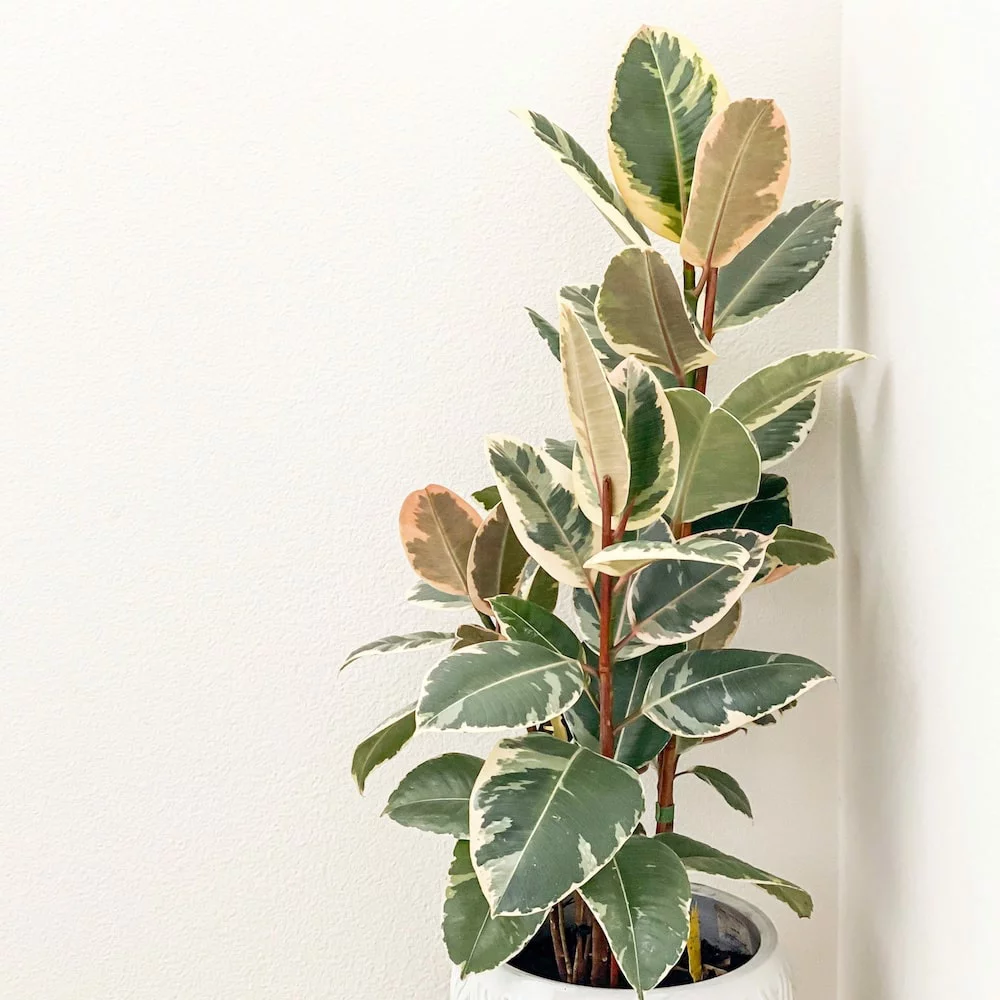
Propagation Tips
How to Propagate Ficus Tineke
Propagating Ficus Tineke is a great way to expand your plant collection. Here’s a simple method:
- Cut a Healthy Stem: Choose a stem with at least one leaf and a node.
- Place in Water: Submerge the cut end in water and place it in a bright spot.
- Wait for Roots: Change the water every few days. Roots should appear in a few weeks.
- Plant in Soil: Once roots are a couple of inches long, plant the cutting in soil.
- Humidity: Create a high-humidity environment by placing a plastic bag over the pot, supported by a chopstick to keep the bag off the cutting.
- Keep the cutting in a warm location with bright, indirect light, and ensure it remains moist.
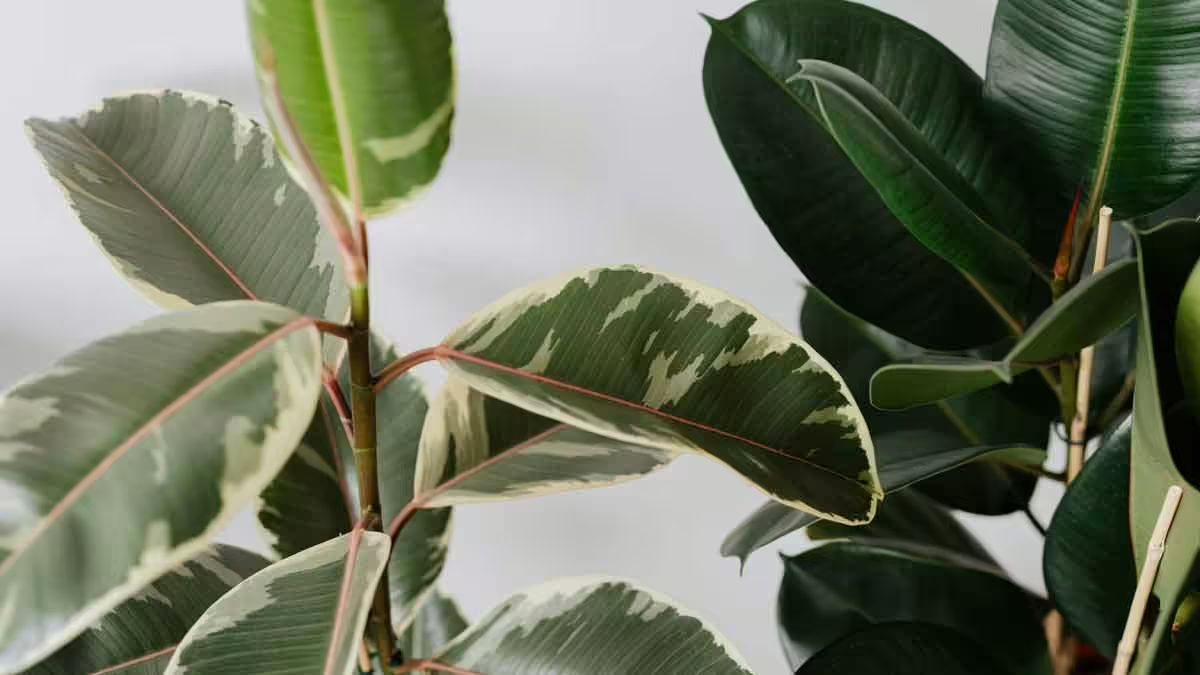
Caring for a Ficus Tineke might seem daunting at first, but with the right knowledge, it can be a delightful and fulfilling experience. Remember, the key points are to provide bright, indirect light, water when the top inch of soil is dry, and use well-draining soil. Keep an eye out for common issues like pests or leaf drop and address them promptly. Happy planting!
FAQs
How Big Does Ficus Tineke Grow?
Ficus Tineke can grow up to 8-10 feet indoors with the right care, though it’s typically kept smaller through pruning.
Can ficus take full sun?
Ficus plants can adapt to full sun, but they need to be acclimated gradually to prevent sunburn. In their native habitat, they thrive in warm, sunny environments, and they can also do well in full sun in your landscape if introduced gradually .
Is Ficus Tineke Toxic to Pets?
Yes, Ficus Tineke is toxic to pets if ingested. Keep it out of reach of curious cats and dogs.
Why does my ficus tineke have brown spots?
Brown spots on Ficus Tineke leaves can be caused by several factors:
- Overwatering: Excessive watering can lead to root rot, which manifests as brown spots on the leaves. Ensure the soil is well-draining and allow it to dry out between waterings .
- Underwatering: Insufficient watering can also cause brown spots. Regularly check the soil moisture and water the plant when the top inch of soil is dry .
- Pest Infestation: Pests such as spider mites and scale can cause damage to the leaves, resulting in brown spots. Inspect your plant regularly and treat any infestations promptly .
- Sunburn: Sudden exposure to direct sunlight can cause sunburn, leading to brown spots on the leaves. Gradually acclimate your plant to increased light levels .
How Do I Clean Ficus Tineke Leaves?
Dust can accumulate on the leaves, affecting the plant’s ability to photosynthesize. Wipe the leaves gently with a damp cloth every few weeks.
